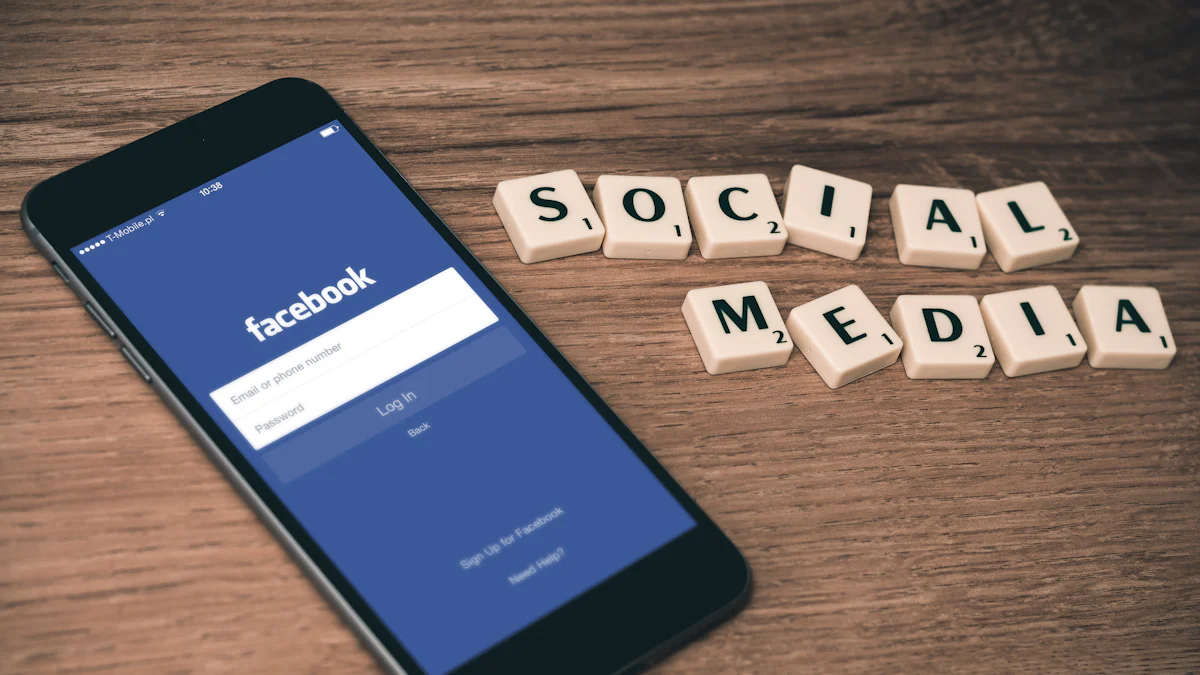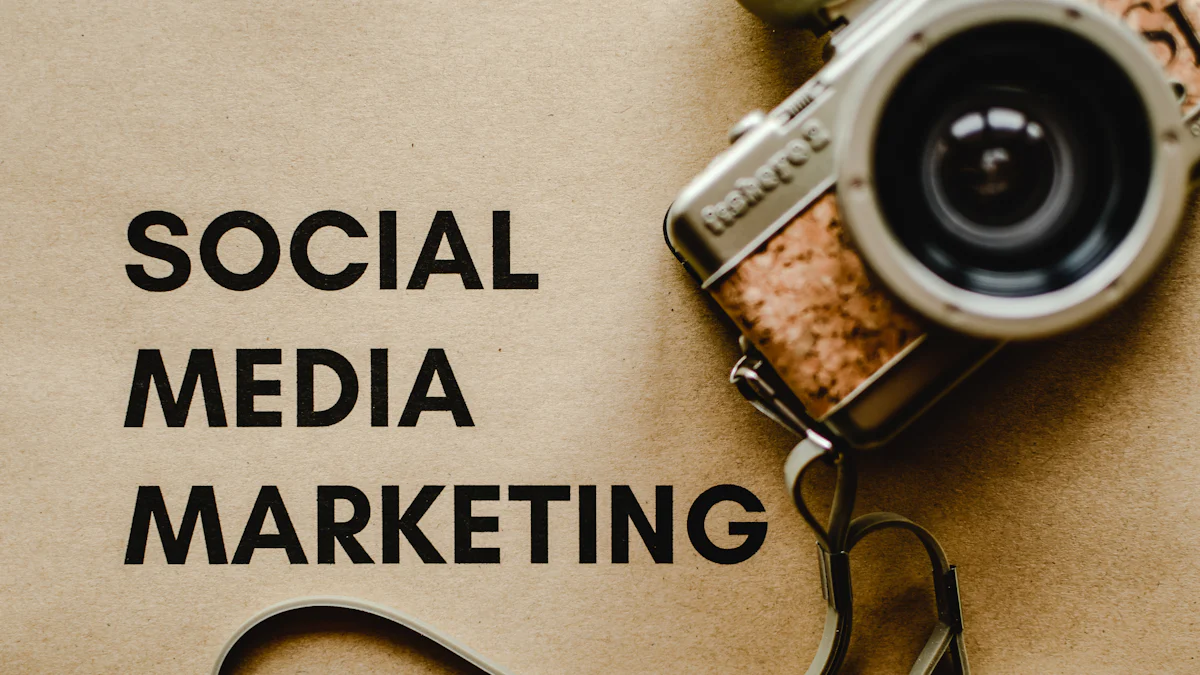What Drives Content to Go Viral in 2025

In 2025, creating viral content isn’t just about luck—it’s about understanding what makes people stop, watch, and share. You’ve probably noticed how interactive AR filters or sound-driven campaigns dominate your feed. Brands like Fenty Beauty and L’Oreal Paris have nailed this. Fenty’s AR filter for shade matching inspired over 47,000 user-generated videos, while L’Oreal’s eyebrow tutorial filter sparked nearly 42,000. These tools don’t just entertain; they connect with people on a personal level. If you want to learn how to make content viral, focus on emotional impact, timing, and authenticity. That’s the secret sauce.
Emotional Triggers That Make Content Go Viral

The Role of Emotions in Virality
Curiosity: Using intriguing headlines and teasers to spark interest.
Have you ever clicked on a post just because the headline left you wondering? That’s curiosity at work. In 2025, curiosity remains one of the strongest emotional drivers for viral content. Whether it’s a teaser video or a headline like “You Won’t Believe What Happened Next,” this emotion pulls people in. It’s not just about creating mystery—it’s about delivering on that promise. When you spark curiosity, you’re inviting your audience to explore and share.
Amazement: Captivating audiences with awe-inspiring visuals or facts.
Awe has a way of stopping people in their tracks. Viral content often includes jaw-dropping visuals, fascinating facts, or stories that leave people saying, “Wow!” Think about videos of breathtaking drone footage or posts revealing groundbreaking scientific discoveries. These moments of amazement create a sense of wonder, making people want to share that feeling with others. After all, who doesn’t love being the first to show their friends something incredible?
Nostalgia and Humor: Tapping into relatable memories and lighthearted content.
Nostalgia and humor are like comfort food for the soul. A meme that reminds you of your childhood or a funny video that makes you laugh out loud can instantly connect with your emotions. In 2025, creators are using these tools to craft viral content that feels personal. For example, a TikTok trend featuring 90s throwback songs can transport you back in time, while a clever joke can brighten your day. These emotions make content not just enjoyable but also shareable.
The Psychology of Sharing
Why people share: Emotional connection, social validation, and relatability.
Why do you share a post? It’s often because it resonates with you emotionally or reflects something about your identity. Studies show that viral content thrives on strong emotions like joy, outrage, or awe. Sharing also provides social validation—it’s a way to connect with others and say, “This is so me!” When content feels relatable, it becomes a conversation starter, spreading across networks like wildfire.
How to evoke the right emotions for your target audience.
To make your content viral, you need to understand your audience’s emotional triggers. Are they inspired by stories of triumph? Do they enjoy lighthearted humor? High-arousal emotions like excitement and curiosity are particularly effective. For example, campaigns like Dove’s “Real Beauty Sketches” struck a chord by addressing self-esteem issues, while the ALS Ice Bucket Challenge combined fun with advocacy. When you tap into the right emotions, you turn passive viewers into active sharers.
Timing Strategies for Viral Content
The Importance of Timing in 2025
High-engagement periods: Evenings, weekends, and during trending events.
Timing can make or break your viral content. In 2025, people are more active online during specific times, and knowing when to post can boost your engagement significantly. For instance, evenings and weekends are prime times when users scroll through their feeds. But it’s not just about the day—it’s about the hour. Here’s a quick guide to the best posting times:
| Day | Best Posting Times |
|---|---|
| Monday | 9 am to noon |
| Tuesday | 10 am to 2 pm, 3 pm to 4 pm |
| Wednesday | 9 am to 3 pm |
| Thursday | 9 am to 2 pm |
| Friday | 9 am to 2 pm |
| Saturday | 12 pm, 7 pm, 8 pm |
| Sunday | 8 am, 11 am, 4 pm |
Posting during these windows increases the chances of your content being seen and shared. But don’t stop there. Keep an eye on trending events or cultural moments. Whether it’s a major sports game or a viral meme, jumping on these trends can amplify your reach. Timing your posts to align with these moments creates a sense of relevance and urgency.
Leveraging real-time trends and cultural phenomena for maximum impact.
Real-time trends are your secret weapon. Platforms like TikTok and Twitter thrive on what’s happening now. If you spot a trending hashtag or a viral challenge, act fast. For example, when a new dance trend takes off, creating your version within hours can put you in the spotlight. Cultural phenomena, like award shows or global events, also offer golden opportunities. By aligning your content with what people are already talking about, you can ride the wave of engagement and make your strategy more effective.
Tools and Analytics for Timing
Using AI-driven tools to predict optimal posting times.
In 2025, AI tools are game-changers for timing your posts. These tools analyze data from your audience’s activity and suggest the best times to post. Apps like Later or Hootsuite now use AI to predict when your followers are most likely to engage. Imagine having a tool that tells you, “Post at 7 pm on Saturday for maximum reach.” It takes the guesswork out of timing and helps you focus on creating great content.
Analyzing audience behavior to refine timing strategies.
Understanding your audience’s behavior is key to refining your timing. Check your analytics regularly to see when your followers are most active. Are they night owls or early birds? Do they engage more during lunch breaks or after work? Platforms like Instagram and Facebook offer insights into when your audience is online. Use this data to adjust your posting schedule. Over time, you’ll notice patterns that can help you fine-tune your strategy and maximize engagement.
Storytelling Techniques to Make Content Viral

The Power of Narrative in Viral Content
Story archetypes that resonate: Triumph over adversity, transformation, and humor.
Stories have a way of sticking with people, especially when they follow familiar patterns. Triumph over adversity is one of the most powerful archetypes. Think about a video where someone overcomes a major challenge—it’s inspiring and shareable. Transformation stories, like a dramatic makeover or a life-changing journey, also grab attention. Humor, on the other hand, is universal. A funny twist or a clever punchline can make your audience laugh and hit the share button. These archetypes work because they connect with emotions, making your content unforgettable.
Creating relatable characters and scenarios to engage audiences.
Relatable characters make your audience feel seen. When you create a character or scenario that mirrors their experiences, they’re more likely to engage. For example, a short video about the struggles of working from home during a power outage can resonate with remote workers. It’s all about showing, not telling. Use dialogue, visuals, and actions to bring your characters to life. When your audience sees themselves in your story, they’ll want to share it with others who can relate.
Visual and Immersive Storytelling
Using short-form videos, AR filters, and infographics to enhance narratives.
Visual storytelling is a game-changer for creating compelling content. Posts with photos and videos get 77% more engagement than text-only posts. Short-form videos, like those on TikTok or Instagram Reels, are perfect for delivering quick, impactful stories. AR filters add an interactive element, letting users become part of the narrative. Infographics simplify complex ideas, making them easy to understand and share. Combining these formats keeps your audience hooked and encourages them to spread the word.
The role of immersive formats like AR/VR in storytelling.
Immersive formats like AR and VR are redefining how you tell stories. In 2025, these technologies are more advanced than ever. Here’s what’s trending:
- Integration of AI in virtual reality personalizes experiences based on user behavior.
- Hyper-realistic VR blurs the line between virtual and real, creating unforgettable moments.
- Social VR platforms let users interact in real-time, building community engagement.
- The metaverse offers a seamless digital universe for storytelling, combining multiple applications.
These tools make your audience feel like they’re part of the story. Whether it’s a virtual classroom or a sensory-rich adventure, immersive storytelling leaves a lasting impression. It’s not just about telling a story—it’s about creating an experience they’ll want to share.
Actionable Tips on How to Make Content Viral
Crafting Shareable and Authentic Content
Keep it concise, visually appealing, and authentic.
In 2025, authenticity is king. People crave realness, not perfection. You’ll notice that raw, relatable content gets more attention than overproduced material. Think about behind-the-scenes clips or unedited customer testimonials. These formats feel genuine and build trust. Short-form videos, like TikToks or Instagram Reels, dominate because they’re quick and visually engaging. To make your content stand out, focus on capturing real moments. A livestream or a candid employee story can resonate more than a polished ad. Keep it simple, keep it real, and watch your audience connect.
Use strong calls-to-action to encourage sharing.
Want your audience to share your content? Ask them! A strong call-to-action (CTA) can make all the difference. Phrases like “Tag a friend who needs this!” or “Smash that subscribe button!” grab attention and drive engagement. CTAs work because they give people a clear next step. Whether it’s liking, commenting, or sharing, these small actions amplify your reach. Don’t underestimate the power of a well-placed CTA—it’s your secret weapon for content virality.
Leveraging Platforms and Trends
Adapting content for platform-specific algorithms (e.g., TikTok, Instagram Reels).
Every platform has its own rules for what goes viral. TikTok rewards creativity and trending audio. Instagram Reels prioritizes relevance and interaction history. Even a viral tweet depends on engagement and recency. To succeed, tailor your content to each platform’s algorithm. For example, TikTok loves short, snappy videos with trending sounds, while YouTube values watch time and click-through rates. Understanding these nuances helps you create engaging content that thrives on each platform.
Staying ahead of trends with social listening tools and trending audio.
Trends move fast, but you can stay ahead with the right tools. Social listening platforms like AgoraPulse and Hootsuite help you track what’s buzzing. Want to find the perfect trending audio? Tools like YouScan can identify what’s hot right now. By jumping on trends early, you can ride the wave of attention and boost your content marketing strategy. Remember, timing is everything when it comes to content virality.
Building a Community and Amplifying Reach
Engaging with your audience through comments and direct messages.
Building a community starts with genuine interaction. Respond to comments, answer questions, and slide into DMs. When you engage with your audience, you create a sense of connection. This involvement encourages them to share your content and stick around for more. Polls, contests, and user-generated content also invite participation. The more you interact, the stronger your community becomes.
Collaborating with influencers to amplify reach and credibility.
Influencers can take your content to the next level. A well-executed collaboration introduces your brand to new audiences. For example, Fiji Water’s partnership with Danielle Bernstein boosted visibility through workout videos. Similarly, Topicals’ influencer trip to Bermuda generated millions of impressions. These partnerships work because influencers bring credibility and a built-in audience. Choose influencers who align with your brand, and watch your reach skyrocket.
Viral content in 2025 thrives on emotional triggers, perfect timing, and authentic storytelling. You can amplify your reach by aligning with trends that fit your brand and planning an emotion-driven content calendar. Experiment with storytelling techniques or unique angles to stand out. Use analytics to refine your strategy and focus on meaningful metrics like shares and comments. Building a community and collaborating with micro-influencers can also boost engagement. Start small, test often, and let data guide your approach. With these strategies, you’ll create content that resonates and spreads like wildfire.
FAQ
What makes content go viral in 2025?
Content goes viral when it connects emotionally, aligns with trends, and feels authentic. Timing matters too. Posting during high-engagement periods or leveraging trending topics increases your chances. Use storytelling, visuals, and interactive elements like AR filters to grab attention and encourage sharing.
How do I know if my content has the potential to go viral?
Look for emotional triggers, relatability, and shareability. Does your content evoke curiosity, amazement, or humor? If it resonates with your audience and encourages interaction, it has viral potential. Analyze past performance and trends to refine your approach.
Which platforms are best for viral content in 2025?
TikTok, Instagram Reels, and YouTube Shorts dominate in 2025. These platforms prioritize short, engaging videos and trending audio. Tailor your content to each platform’s algorithm for better visibility. Stay active on platforms where your audience spends the most time.
How can I use trends to make my content go viral?
Jump on trends early. Use social listening tools to track hashtags, challenges, or viral audio. Align your content with trending topics while keeping it relevant to your brand. Quick action helps you ride the wave of engagement before the trend fades.
Is it possible to plan for content to go viral?
While you can’t guarantee virality, you can increase the odds. Focus on emotional storytelling, strategic timing, and platform-specific optimization. Use analytics to understand your audience and refine your strategy. Consistency and experimentation are key to creating content that resonates and spreads.
See Also
The Reasons Motivational Posts Thrive on Social Media
Exploring the Mindset for Crafting Viral Content
Defining Viral Content and Its Importance Today
